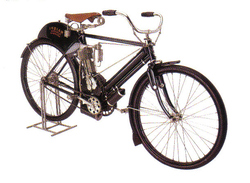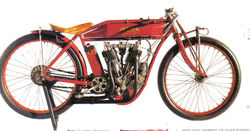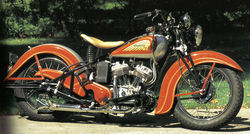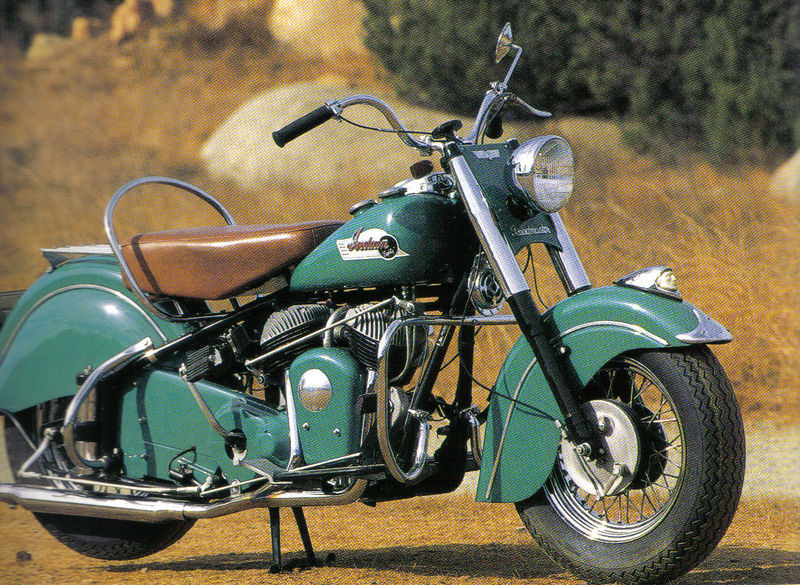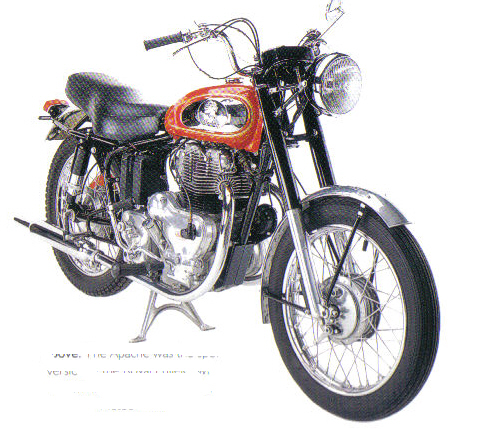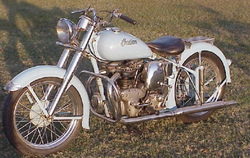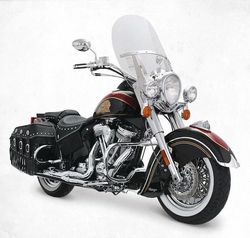EXAMPLES OF INDIAN MOTORCYCLES DURING THE KEY YEARS THEY WERE BUILT:
A LOOK AT FIVE PERIODS OF INDIAN HISTORY:
1912 BOARD TRACK RACER:
Prior to 1910, Indian dominated the race tracks. Into the teens, Indian was the one to beat, but as the years went on, Indian lost ground. By the 1940's Indian had lost so much ground, only a few riders were winners for the brand.
A BEAUTIFUL 1937 SPORT SCOUT:
During the years that the DuPont family owned Indian(1930-1945), the development of the motorcycle greatly improved. Color variations also increased. Some of the most beautiful paint schemes were created.
THE LAST OF THE ORIGINAL LINE, THE 1953 CHIEF:
The last years of the Chief included the 80 cubic inch flat head engine. That was large for the day. Powerful, proud, well built, and a legend. Few were built even though many wanted to buy one. Finances were short, the factory had limited abilities, and because of the low volume, parte were more expensive than they should have been. Long after the last Chief was built, many still wanted one.
THE ENFIELD-INDIAN:
The Indian which followed the last Chief was was based on the British Royal Enfield. A great bike, but not American!
The Indian "Torque" series:
After Ralph Rogers took control of Indian, he created a new line of motorcycles using engines from Torque Industries. Torque Industries, which he owned, was developing a British style vertical twin which was very modern for the day. They developed a single of 219cc and a twin which was 426cc. They were sold a a 220 and a 440. One could only speculate as to why such odd sizes! They were later enlarged to 250 and 500cc bikes. There bikes were marketed from 1946 to 1952. They should have been a success but there were three factors which ruined the line. First, they were not properly tested prior to being sold and the reliability problems hurt the potential of the machines. Secondly, the British government had devalued the Pound, making the British bikes inexpensive here in the USA. Finally, the odd sizes (220/440) didn't go well with the typical buyer. Why buy a 220 for the cost of a British 350 or a 440 for the price of a 500? All of these factors led to the quick end of a line which could have transformed the company.
The Gillroy through Polaris Indians:
The Torque series was a sad end to a great line of motorcycles. Indian was spending so much money correcting the problems with the new bikes there was little left to develop them further. What could have been a rebirth, was a nail in the coffin. Only the Chief remained for 1953 which was about the same as the 51 and 52 series. People still wanted the Chief but it was to late! Nearly half a century (46 years) have passed since a true re-birth of Indian. The Gilroy Indians were Kit bikes, the Stellicon Indian was a well engineered bike, but the financing stopped, and finally we have the Polaris Indian. Hopefully Polaris will have success with this new venture.
The ultimate culprit to the demise of Indian was greed. The desire to make big profits with little development, was the problem. The Indian name represented the best of America but those running the company represented the worst.
